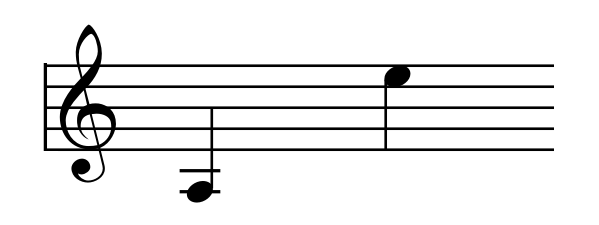Embouchure
- Maintain an appropriate and functional embouchure suitable for the particular instrument, with relaxed lips supported by the corners of the mouth:
- gradually strengthening their embouchure over an increasing range and duration
- moving the embouchure to give more focus below the stave
- starting to develop flexibility enabling slurs across harmonics linked to the range of notes known
- Slur notes evenly with more ease and control at a variety of tempi
Suggested range for Programme of Study 3:

Horns and tubas should be developing lower registers.
Encourage learners to buzz with and without the mouthpiece. For example:
- buzz an appropriate passage of a piece while the teacher or another member of the group plays the tune
- buzz rhythms and pitch patterns from flash cards
Ask learners to play long notes with changing dynamics, e.g. crescendo and diminuendo, following directions and symbols.
Encourage learners to play lip-building exercises of increasing range, e.g. explore higher harmonics by starting on a lower harmonic series and working up.

Help learners to extend their range lower by demonstrating and supporting them to develop the necessary changes in embouchure, e.g. moving the jaw forwards and downwards.
Devise flexibility exercises between G and B on first and third valves (sixth position). Ask learners how many notes they can play in one breath. If appropriate, introduce the different positions of the tongue for high and low notes.
As an extension activity, ask learners to make up their own slur-pattern exercises.
Use first and third valves or sixth position as appropriate.
Use a mirror to facilitate learners’ self-evaluation of their embouchure and mouthpiece placement.
Video-recording could also be used for this purpose, but it is vital to check the policy of the school or other organisation you are working in with regards to any form of recording. Children must never be videoed without parental consent and all policies regarding use and storage of recordings must be adhered to.
Explore the progression of this Learning Objective
Continue exploring the current Programme of Study